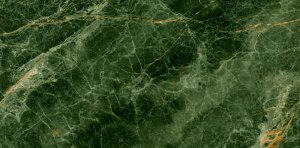Decorative Paint Techniques to Renovate Your Walls

Decorative paint techniques are perfect for changing the appearance of your walls. In this article, we share a small guide to choosing the one that suits you best.
Don’t miss it, as it’ll allow you to make the right choice and make sure your walls look more attractive! Sponge effect, combing painting technique, stencils… Do they sound familiar to you?
Decorative paint techniques, many possibilities
The sponge effect – perfect to expand spaces

With the help of a natural sponge, you can achieve a light and shadow effect that helps to visually enlarge spaces. To apply this technique, experts recommend the use of soft colors in the same range.
It’s preferable to use the sponge effect only in one or two rooms of your house or to highlight the main wall of a large room. This is because using it throughout your house can be overpowering.
This technique is suitable for irregular surfaces because the mottling of its final finish covers up imperfections very well. Nevertheless, it adapts to any surface.
Combing paint technique – ideal for uneven walls

You can achieve this paint technique using a thick-toothed comb after applying a leveling compound to cover up all imperfections.
The technique is highly recommended for irregular surfaces since the leveling compound manages to cover up imperfections in addition to giving it a more uniform appearance.
It’s ideal for living rooms, dining rooms, and entrance halls. Also, soft colors, such as ocher and earthy colors, are best suited to highlight the decorative effect, which is warm and very natural at the same time.
It’s a good technique that goes perfectly with dark wood furniture and light fabrics. Of course, keep in mind that it’s a good idea for a professional to do it.
Decorative painting with faux stucco – velvety walls
You can apply this during the final coats of paint to achieve transparent effects and attractive shadows. By doing this, the walls will acquire a velvety appearance. We recommend using warm colors, such as ocher or vanilla.
There’s another variety, oil, that offers a brighter finish and a greater texture. A great advantage is that you can apply it to any room.
Pointillism – an irregular and very natural finish
You can use paste or thickened paints with additives for this technique. It offers an irregular and natural-looking finish with a porous texture that varies depending on the light.

In neutral or earth tones, it works for rustic environments. Also, it’s popular in rooms such as the kitchen, given its great resistance to the passage of time. A good idea is to combine it with the scraping technique to give it a finish similar to natural stone.
Glazing – a combination of colors and textures

This technique, which uses oils and turpentine as solvents, allows you to mix and match different colors, adding texture and depth to its nuances. This way, you can achieve a very decorative finish.
Glazing allows you to imitate the appearance of old walls and recreate rustic environments. It’s suitable for living rooms and bedrooms since it’s very resistant.
Don’t forget that warm and light colors are the ones that best allow you to appreciate the beautiful effects on the walls. Of course, remember that you need smooth and dust-free walls to get the desired result.
Decorative paint with natural pigments – a very elegant discoloration
Natural pigments are obtained from minerals. Some of the most representative are limewash and silicate mineral paints. Normally, they’re applied with brushes, which create a discolored streak effect that’s enhanced by the use of limewash, as it tends to absorb the pigment.
They offer an uneven finish with diluted colors. Keep in mind that, given its texture, this technique is a great way to add a rustic touch to a room or an entire home. The best part is that you don’t need to treat your walls before applying it.
Mopping – a very bright effect
To apply this technique, all you need to do is irregularly bang your wall with a wrinkled cloth. This effect is much stronger than the sponge effect. Therefore, we recommend choosing light colors over a neutral base.
This method has a great advantage in interior design, as it expands spaces and provides light. It’s perfect for living rooms, entrance halls, and hallways. If you top it with wax or varnish, you’ll achieve a more elegant effect.
Marbling – natural stone appearance
With marbling, it’s possible to emulate the appearance of semi-precious stones, marble, and granite. Despite its rough appearance, it has a smooth texture.

The most popular colors to recreate this technique are ocher, brown, and gray. Due to its unique finish, it’s very suitable for bathrooms.
What did you think of these eight decorative paint techniques? Now that you’ve learned more about them, you can decide to redecorate your home. Which did you choose?
Decorative paint techniques are perfect for changing the appearance of your walls. In this article, we share a small guide to choosing the one that suits you best.
Don’t miss it, as it’ll allow you to make the right choice and make sure your walls look more attractive! Sponge effect, combing painting technique, stencils… Do they sound familiar to you?
Decorative paint techniques, many possibilities
The sponge effect – perfect to expand spaces

With the help of a natural sponge, you can achieve a light and shadow effect that helps to visually enlarge spaces. To apply this technique, experts recommend the use of soft colors in the same range.
It’s preferable to use the sponge effect only in one or two rooms of your house or to highlight the main wall of a large room. This is because using it throughout your house can be overpowering.
This technique is suitable for irregular surfaces because the mottling of its final finish covers up imperfections very well. Nevertheless, it adapts to any surface.
Combing paint technique – ideal for uneven walls

You can achieve this paint technique using a thick-toothed comb after applying a leveling compound to cover up all imperfections.
The technique is highly recommended for irregular surfaces since the leveling compound manages to cover up imperfections in addition to giving it a more uniform appearance.
It’s ideal for living rooms, dining rooms, and entrance halls. Also, soft colors, such as ocher and earthy colors, are best suited to highlight the decorative effect, which is warm and very natural at the same time.
It’s a good technique that goes perfectly with dark wood furniture and light fabrics. Of course, keep in mind that it’s a good idea for a professional to do it.
Decorative painting with faux stucco – velvety walls
You can apply this during the final coats of paint to achieve transparent effects and attractive shadows. By doing this, the walls will acquire a velvety appearance. We recommend using warm colors, such as ocher or vanilla.
There’s another variety, oil, that offers a brighter finish and a greater texture. A great advantage is that you can apply it to any room.
Pointillism – an irregular and very natural finish
You can use paste or thickened paints with additives for this technique. It offers an irregular and natural-looking finish with a porous texture that varies depending on the light.

In neutral or earth tones, it works for rustic environments. Also, it’s popular in rooms such as the kitchen, given its great resistance to the passage of time. A good idea is to combine it with the scraping technique to give it a finish similar to natural stone.
Glazing – a combination of colors and textures

This technique, which uses oils and turpentine as solvents, allows you to mix and match different colors, adding texture and depth to its nuances. This way, you can achieve a very decorative finish.
Glazing allows you to imitate the appearance of old walls and recreate rustic environments. It’s suitable for living rooms and bedrooms since it’s very resistant.
Don’t forget that warm and light colors are the ones that best allow you to appreciate the beautiful effects on the walls. Of course, remember that you need smooth and dust-free walls to get the desired result.
Decorative paint with natural pigments – a very elegant discoloration
Natural pigments are obtained from minerals. Some of the most representative are limewash and silicate mineral paints. Normally, they’re applied with brushes, which create a discolored streak effect that’s enhanced by the use of limewash, as it tends to absorb the pigment.
They offer an uneven finish with diluted colors. Keep in mind that, given its texture, this technique is a great way to add a rustic touch to a room or an entire home. The best part is that you don’t need to treat your walls before applying it.
Mopping – a very bright effect
To apply this technique, all you need to do is irregularly bang your wall with a wrinkled cloth. This effect is much stronger than the sponge effect. Therefore, we recommend choosing light colors over a neutral base.
This method has a great advantage in interior design, as it expands spaces and provides light. It’s perfect for living rooms, entrance halls, and hallways. If you top it with wax or varnish, you’ll achieve a more elegant effect.
Marbling – natural stone appearance
With marbling, it’s possible to emulate the appearance of semi-precious stones, marble, and granite. Despite its rough appearance, it has a smooth texture.

The most popular colors to recreate this technique are ocher, brown, and gray. Due to its unique finish, it’s very suitable for bathrooms.
What did you think of these eight decorative paint techniques? Now that you’ve learned more about them, you can decide to redecorate your home. Which did you choose?







